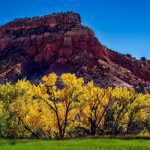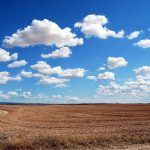May 22, 2023 — It’s a significant deal, with the Lower Colorado Basin States — including California — agreeing to conserve 3 million acre-feet of Colorado River system water.
The Lower Basin Plan has been submitted to the Bureau of Reclamation with all Seven Colorado River Basin States supporting its evaluation as an action alternative within the Near-Term Colorado River Operations Draft Supplemental Environmental Impact Statement.
Lower Basin State Governors Announce Plan to Protect the Colorado River System.
Arizona Governor Katie Hobbs, California Governor Gavin Newsom, and Nevada Governor Joe Lombardo announced that the Colorado River Lower Basin States have developed a plan to conserve 3 million acre-feet over the next three years to protect the Colorado River system.
“The Lower Basin Plan is the product of months of tireless work by our water managers to develop an agreement that stabilizes the Colorado River system through 2026,” said Governor Katie Hobbs . “Thanks to the partnership of our fellow Basin States and historic investments in drought funding, we now have a path forward to build our reservoirs back up in the near-term. From here, our work must continue to take action and address the long-term issues of climate change and overallocation to ensure we have a sustainable Colorado River for all who rely upon it.”
. “Thanks to the partnership of our fellow Basin States and historic investments in drought funding, we now have a path forward to build our reservoirs back up in the near-term. From here, our work must continue to take action and address the long-term issues of climate change and overallocation to ensure we have a sustainable Colorado River for all who rely upon it.”
“The entire Western United States is on the frontlines of climate change — we must work together to address this crisis and the weather extremes between drought and flood,” said Governor Gavin Newsom





“Nevada has long been a leader in regional water conservation efforts, and we’re pleased to continue leading through this agreement with other Lower Basin States,” said Governor Joe Lombardo





Federal Government Announcement: Funding from President Biden’s Investing in America agenda combined with voluntary commitments will conserve 3-million-acre feet of water through 2026.
The Department of the Interior also weighed in on the groundbreaking water conservation plan





Consensus-Based Approach for System Conservation Proposal.
Under the proposal, the Lower Basin states have come to an agreement and requested the submission of a consensus-based system conservation proposal. The proposal will undergo a comprehensive analysis as an action alternative under the Bureau of Reclamation’s draft Supplemental Environmental Impact Statement (SEIS), which was published last month.
Water Conservation Targets and Funding.
The consensus-based proposal, agreed upon by the three Lower Basin states, sets forth a commitment to conserve a minimum of 3 million-acre-feet





Acknowledging the Importance of the Colorado River Basin.
Secretary Deb Haaland expressed the administration’s dedication to collaboration and finding consensus solutions in the face of climate change and persistent drought. She emphasized the significance of the Colorado River Basin, which serves as a vital resource for 40 million people, seven states, and 30 Tribal Nations, supplying essential services such as drinking water and electricity.
Next Steps: Environmental Impact Analysis and New Operating Guidelines.
The Department of the Interior has decided to temporarily withdraw the draft SEIS published last month to conduct a comprehensive analysis of the proposal’s environmental effects under the National Environmental Policy Act (NEPA). An updated draft SEIS, incorporating the consensus-based proposal as an action alternative, will be published for public comment. Consequently, the previous deadline of May 30, 2023, for submitting comments on the draft SEIS is no longer applicable. The Department anticipates finalizing the SEIS process later this year.
Looking ahead, the Department will commence the development of new operating guidelines to replace the 2007 Colorado River Interim Guidelines for Lower Basin Shortages and the Coordinated Operations for Lake Powell and Lake Mead, starting from the end of 2026. Reclamation will publish a Notice of Intent for the Environmental Impact Statement related to the post-2026 guidelines in the upcoming weeks, marking an important step toward forging a sustainable path for the basin and its millions of inhabitants.






Leave a Reply